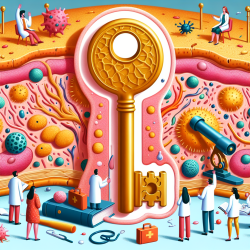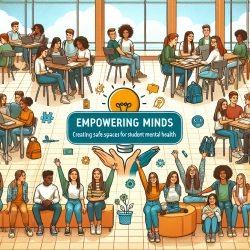Introduction
Dermoscopic image interpretation is a critical skill in dermatology, requiring practitioners to distinguish between benign and malignant skin lesions accurately. Traditional methods of education, while effective, can be time-consuming and require extensive practice. A recent review titled "Theory-Based Approaches to Support Dermoscopic Image Interpretation Education: A Review of the Literature" offers innovative strategies to enhance dermoscopy education, making it more engaging and efficient.
Theory-Based Approaches to Enhance Learning
The review identifies several theory-based approaches that could revolutionize dermoscopic education:
- Whole-Task Learning: This approach involves teaching complex skills through authentic clinical scenarios, promoting the transfer of knowledge to real-world practice. It emphasizes learning tasks, supportive information, just-in-time information, and part-task practice.
- Microlearning: By segmenting the curriculum into short, focused sessions, microlearning increases retention and engagement. This method allows learners to revisit material frequently, reinforcing long-term memory storage.
- Perceptual Learning: This method challenges learners to recognize subtle differences in dermoscopic images through repeated exposure, enhancing sensory discrimination and diagnostic accuracy.
- Adaptive Learning: Utilizing technology, adaptive learning personalizes the educational experience, adjusting the difficulty and sequence of learning tasks based on individual performance.
Applications in Dermoscopy Education
Implementing these approaches in dermoscopy education can significantly improve outcomes:
- Whole-Task Learning: By integrating real-life scenarios into training, learners can develop problem-solving skills and professional independence.
- Microlearning: Platforms like Project ECHO and educational webcasts from the International Dermoscopy Society exemplify microlearning, providing short, focused learning opportunities that enhance retention.
- Perceptual Learning: This approach can be applied by allowing learners to discover diagnostic features independently, fostering deeper understanding and retention.
- Adaptive Learning: Adaptive algorithms can tailor the learning experience, ensuring that learners focus on areas where they need the most improvement.
Conclusion
By adopting these innovative educational strategies, practitioners can improve their dermoscopic image interpretation skills more efficiently. These approaches not only make learning more interactive and engaging but also reduce the time required to achieve expert-level proficiency. As the field of dermoscopy continues to evolve, embracing these methods will be crucial for practitioners aiming to provide the best care for their patients.
To read the original research paper, please follow this link: Theory-Based Approaches to Support Dermoscopic Image Interpretation Education: A Review of the Literature.










